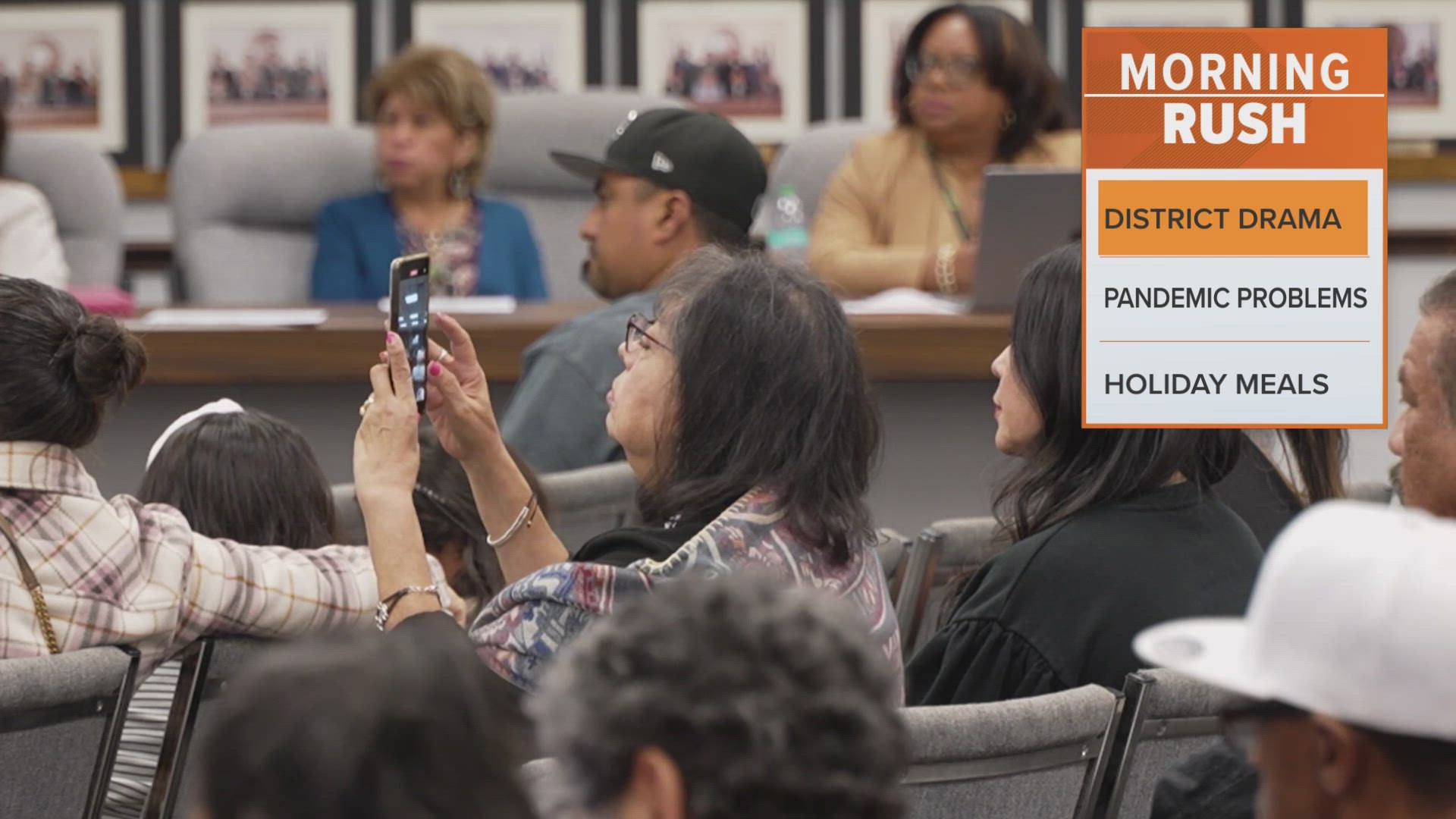TEXAS, USA — Students who started school during or after the COVID-19 pandemic have a harder time saying goodbye to their parents when they drop them off, Plains Independent School District Superintendent Robert McClain said.
Third graders are behind in their reading, teacher Heather Harris said, so the district hired a reading specialist to work with their youngest students.
They’re also struggling in math, San Antonio ISD Superintendent Jaime Aquino said.
“When I go into classrooms of students who are currently fourth graders or fifth graders who were either kindergarten or first grade [during the pandemic], you can see that there is a lack of mathematical fluency around basic facts,” he said.
Texas school administrators, educators and education policy experts say they’re seeing troubling signs that students in the earliest grades are not doing as well academically as children who started school before the pandemic. State and federal officials devoted significant resources to help students affected by the pandemic but they mostly focused on older children whose schooling was disrupted. Experts worry that the state’s youngest students will have a harder time catching up without intervention.
A recent study by Curriculum Associates Research looked at national academic growth trends in the last four years and compared them with pre-pandemic data. It found younger students — like those who were enrolled in kindergarten or first grade in 2021 — were the furthest behind in both reading and math compared to their peers before the pandemic.
According to the report, those students may be struggling because of disruptions in their early childhood experiences, difficulties building up foundational skills like phonics or number recognition, problems engaging with virtual learning during the pandemic or insufficient resources being devoted to help children in the earliest grades.
Aquino, San Antonio ISD’s superintendent, said attendance in early grades is lower than before the pandemic, which is impacting foundational learning.
“We told families to stay home during the pandemic. Now we’re sending the message: You have to be in school,” Aquino said.
Low pre-K enrollment during the pandemic may be another factor. Children who attend pre-K are nearly twice as likely to be ready for kindergarten, said Miguel Solis, president of the education research nonprofit Commit Partnership.
In the school year 2019-2020, there were 249,226 students enrolled in pre-kindergarten in Texas, according to state data. This number dropped by nearly 50,000 in the following year.
Low academic attainment can compound in ways that become increasingly difficult to fix. Harris, the Plains ISD teacher, said it’s hard for third-grade students who fall behind to catch up because their teachers will likely not be able to spend much time helping them develop foundational skills they already should have learned.
“Pre-K through second, you’re learning to read, and then third grade on up, you’re reading to learn. So there’s that huge switch of what you’re teaching,” she said.
Mary Lynn Pruneda, an education analyst at the public policy think tank Texas 2036, said the Curriculum Associates Research study raises concerns about young learners but it’s difficult to pinpoint the impact in Texas because of a lack of data.
“We have very limited data on how younger students are doing that’s consistent across grade levels,” Pruneda said.
Without data to help diagnose the problem, students are being set up for continually low results in the state’s standardized test, she said.
There are some indications of how the problem might be manifesting in Texas. In Dallas County, for example, declines in math and reading scores between 2023 and 2024 were most acute among third graders, who would have been in kindergarten during the pandemic, Solis said.
Solis said the state needs to start collecting literacy data for early grades to identify students who are not on track and intervene. He’s hopeful because some lawmakers in both the Texas House and Senate have already expressed interest in taking a close look at how young students learn foundational skills, he said.
“We can’t wait until the third grade STAAR to see how younger students are progressing,” he said.
Pruneda said one step Texas can take to start reversing the trend is raising spending in public education — something educators are desperate for — to help school districts hire and retain the best teachers possible. The superintendents of both Plains and San Antonio ISDs said it is imperative for the Texas Legislature to approve a significant funding boost next year after lawmakers failed last year to do so amid the fight over school vouchers.
High-impact tutoring, like the one legislators mandated for grades 3-8, may also help early-grade students, she said.
This article originally appeared in The Texas Tribune at https://www.texastribune.org/2024/08/09/texas-early-childhood-education-pandemic/.
The Texas Tribune is a member-supported, nonpartisan newsroom informing and engaging Texans on state politics and policy. Learn more at texastribune.org.



